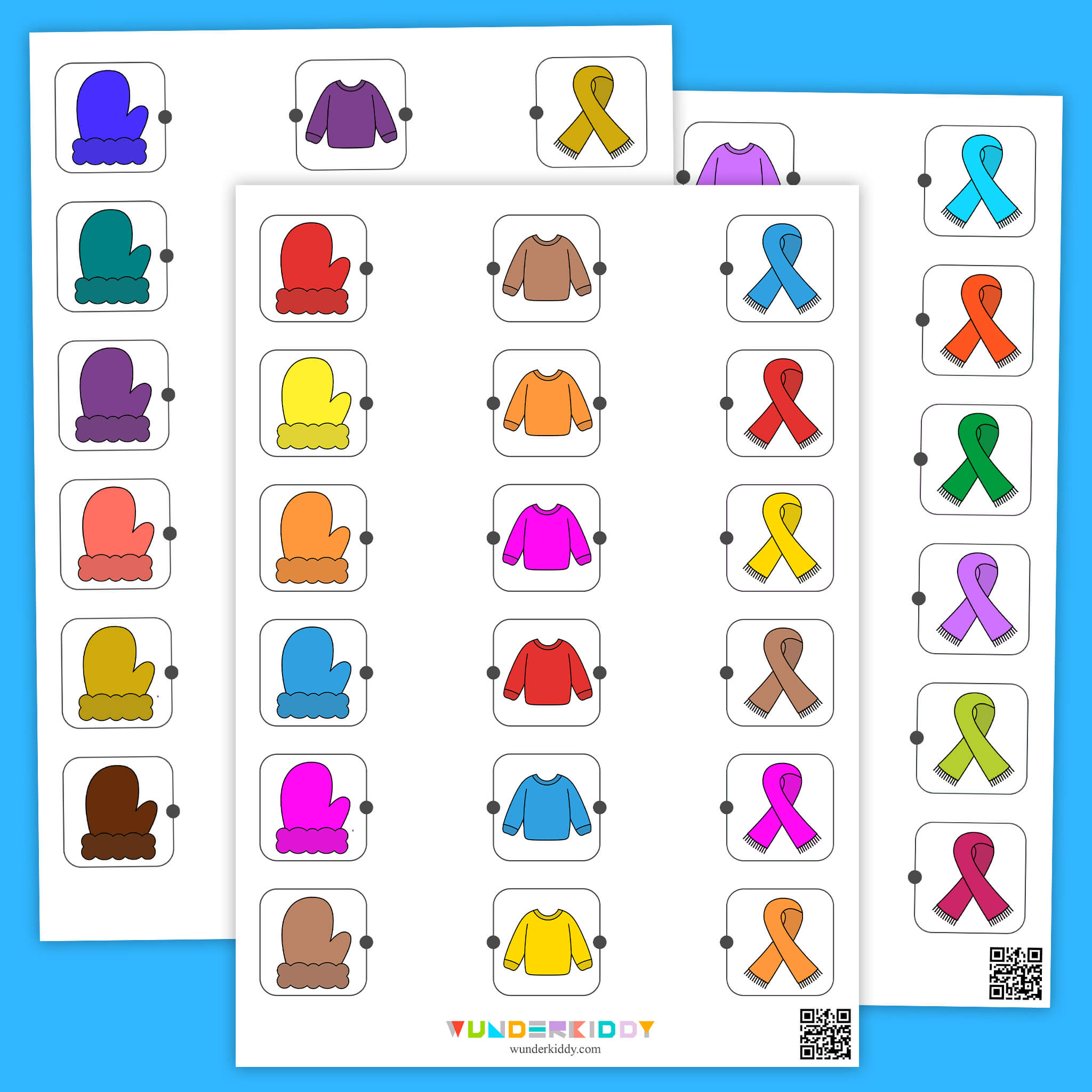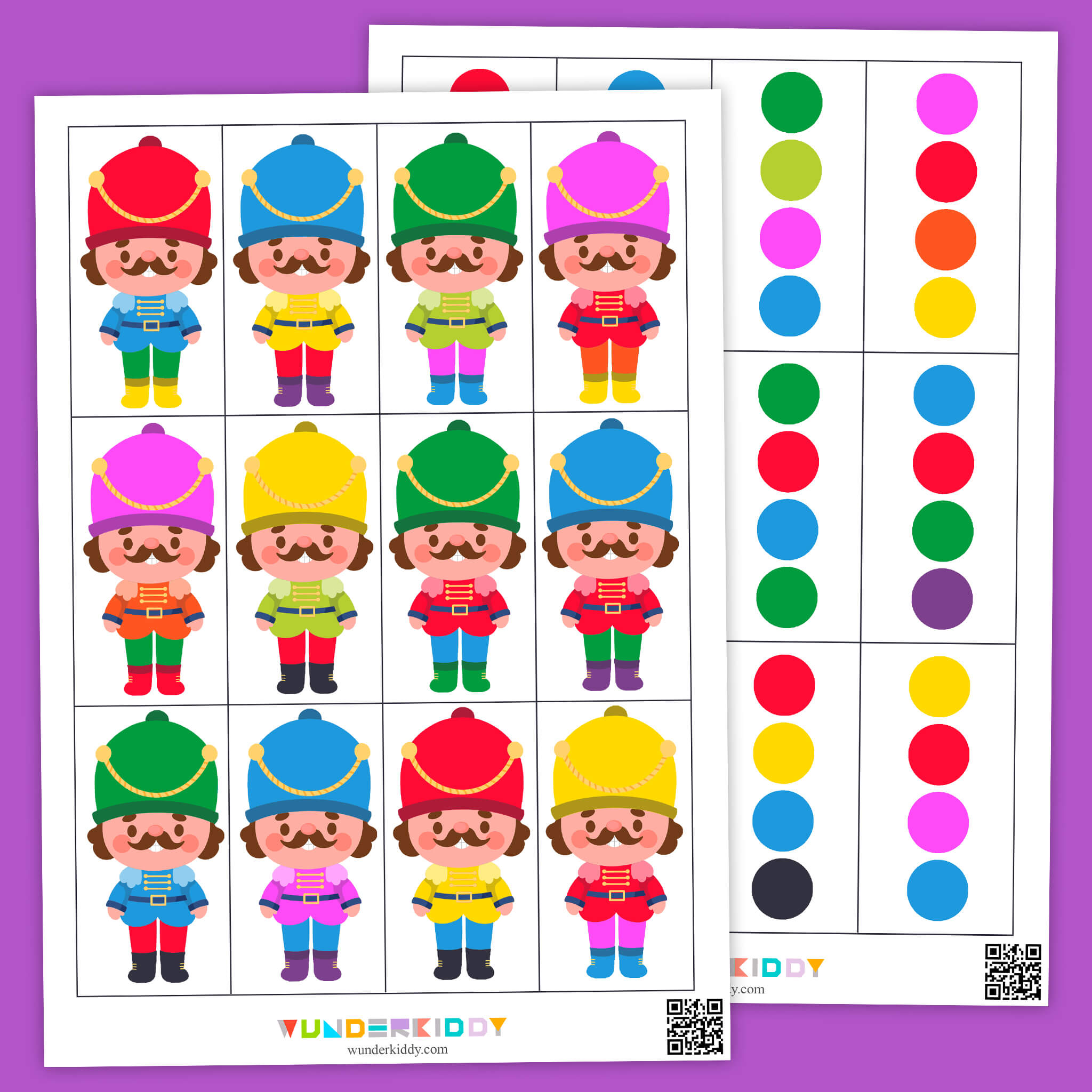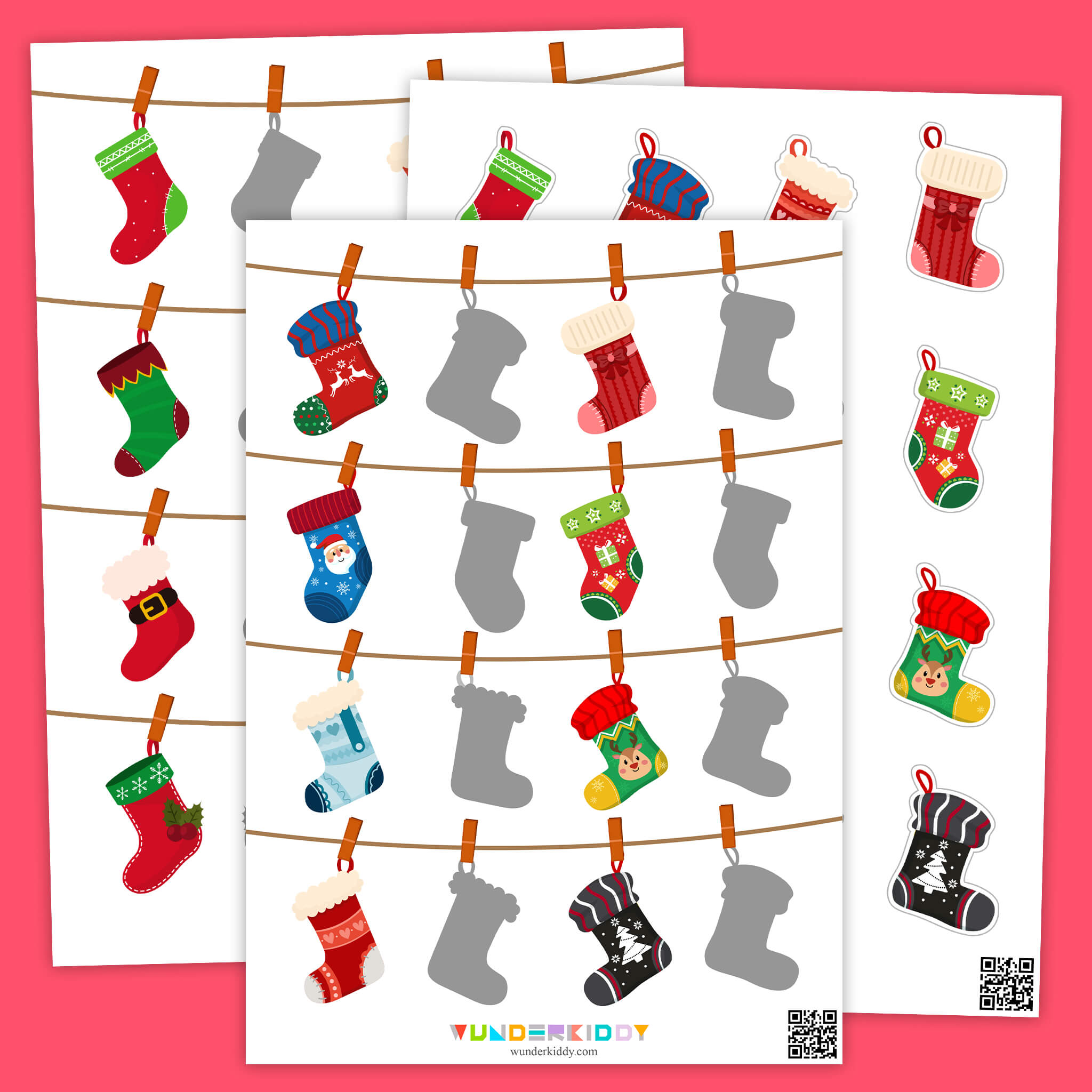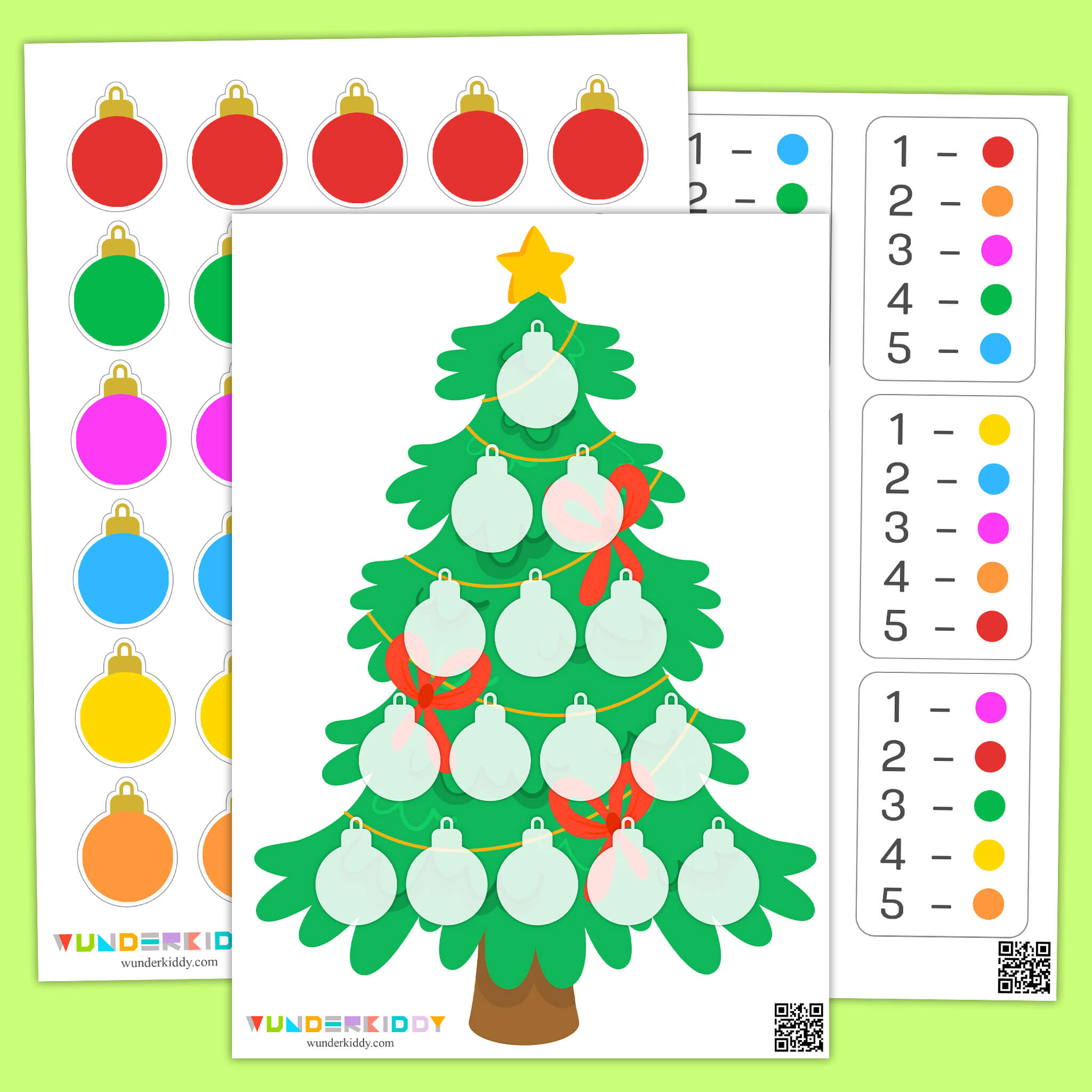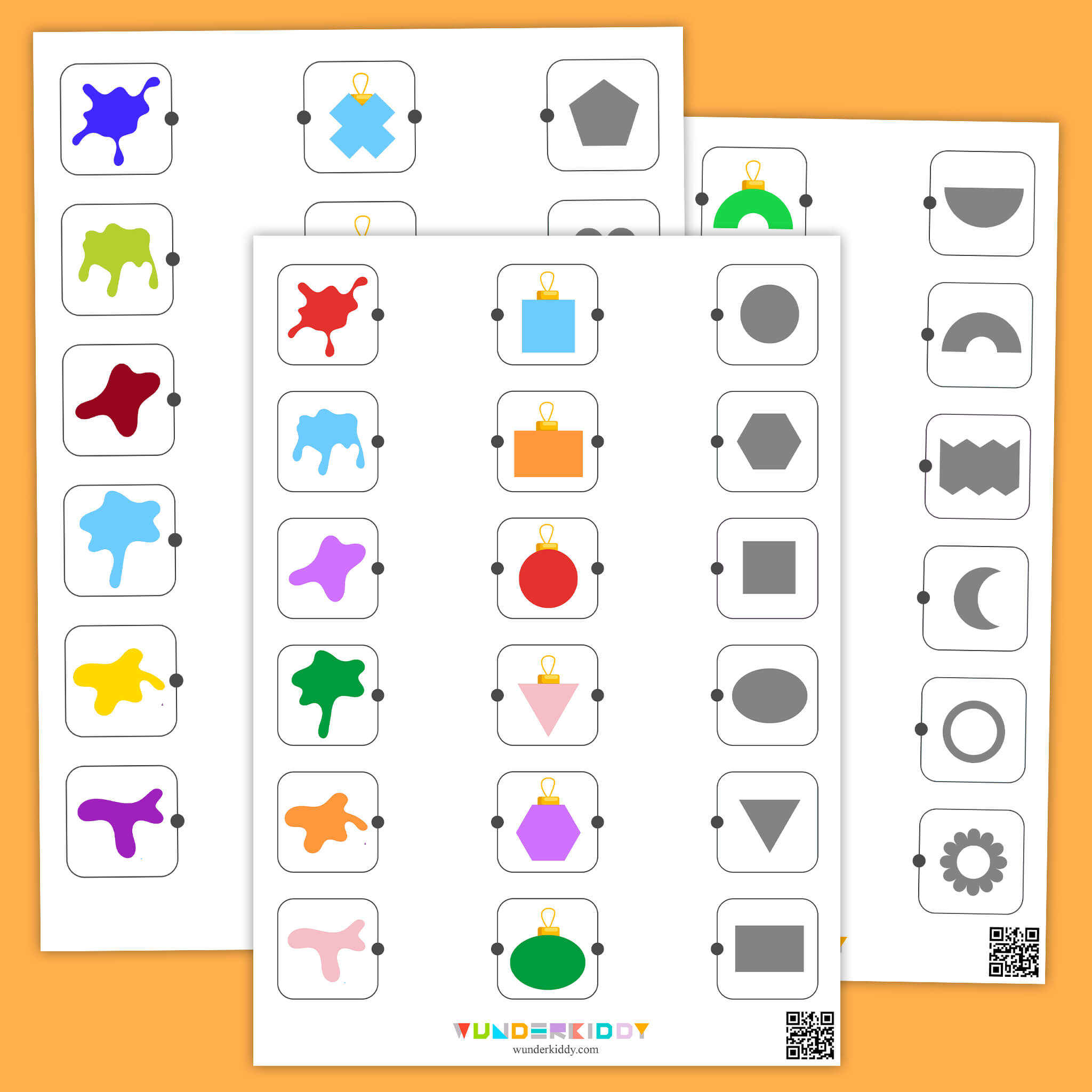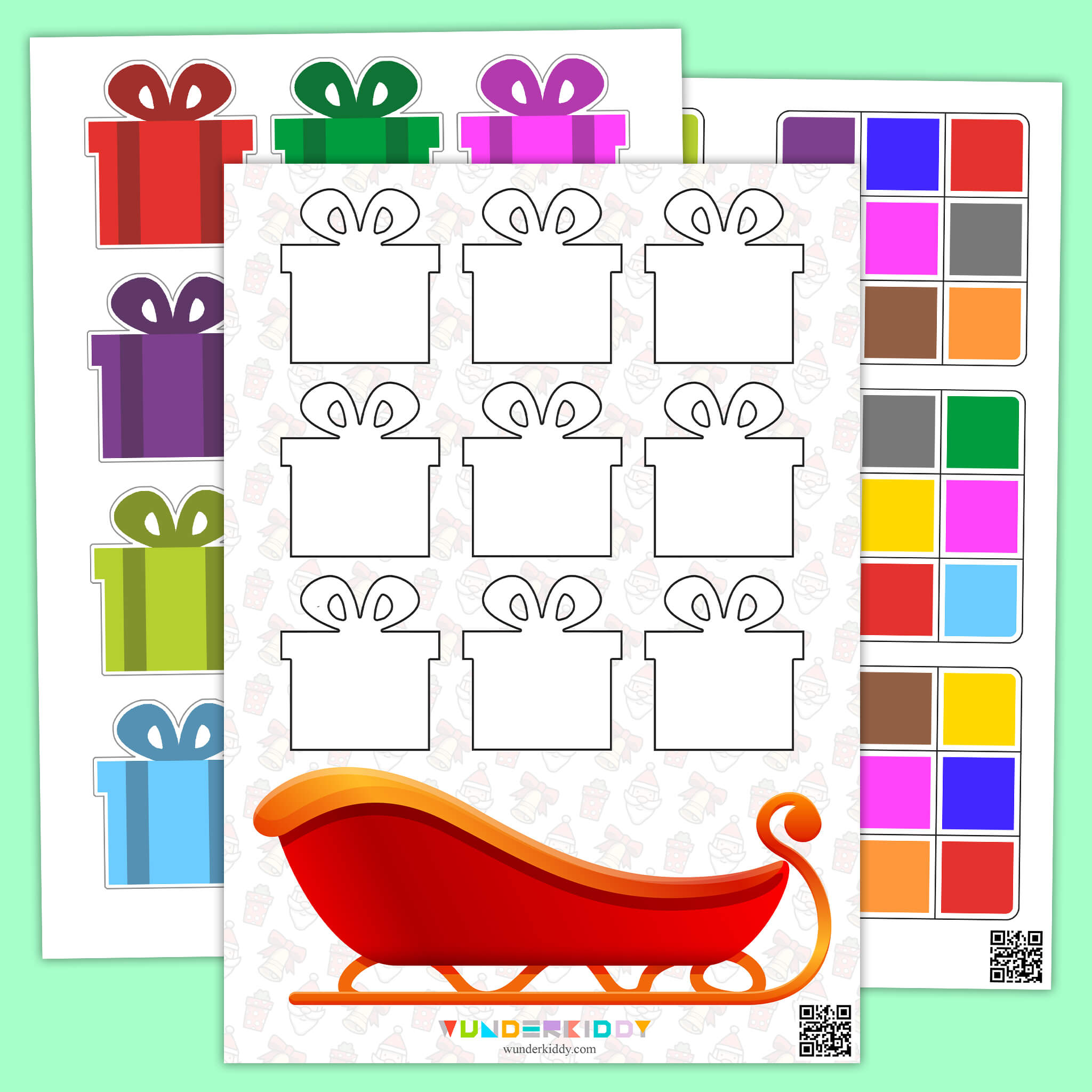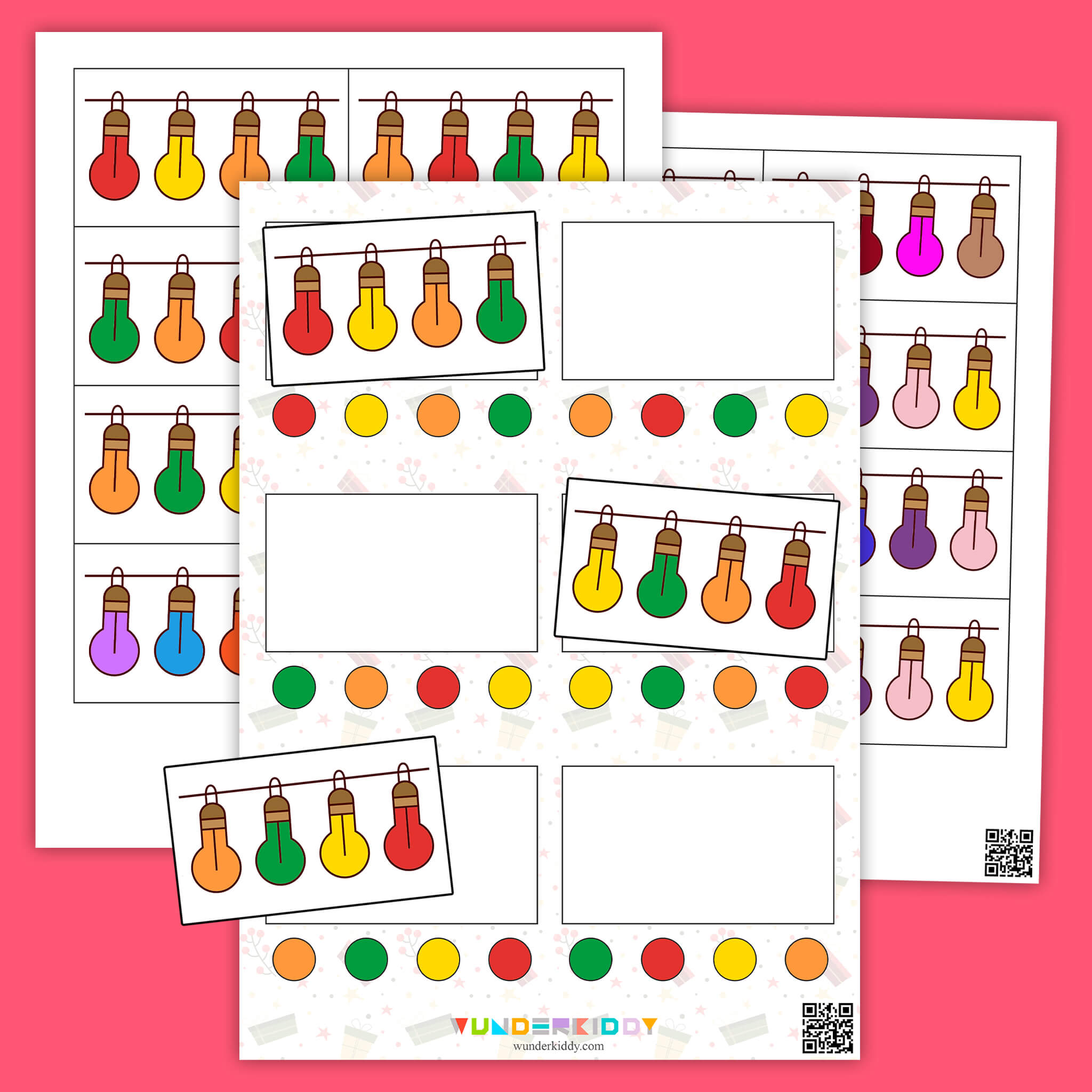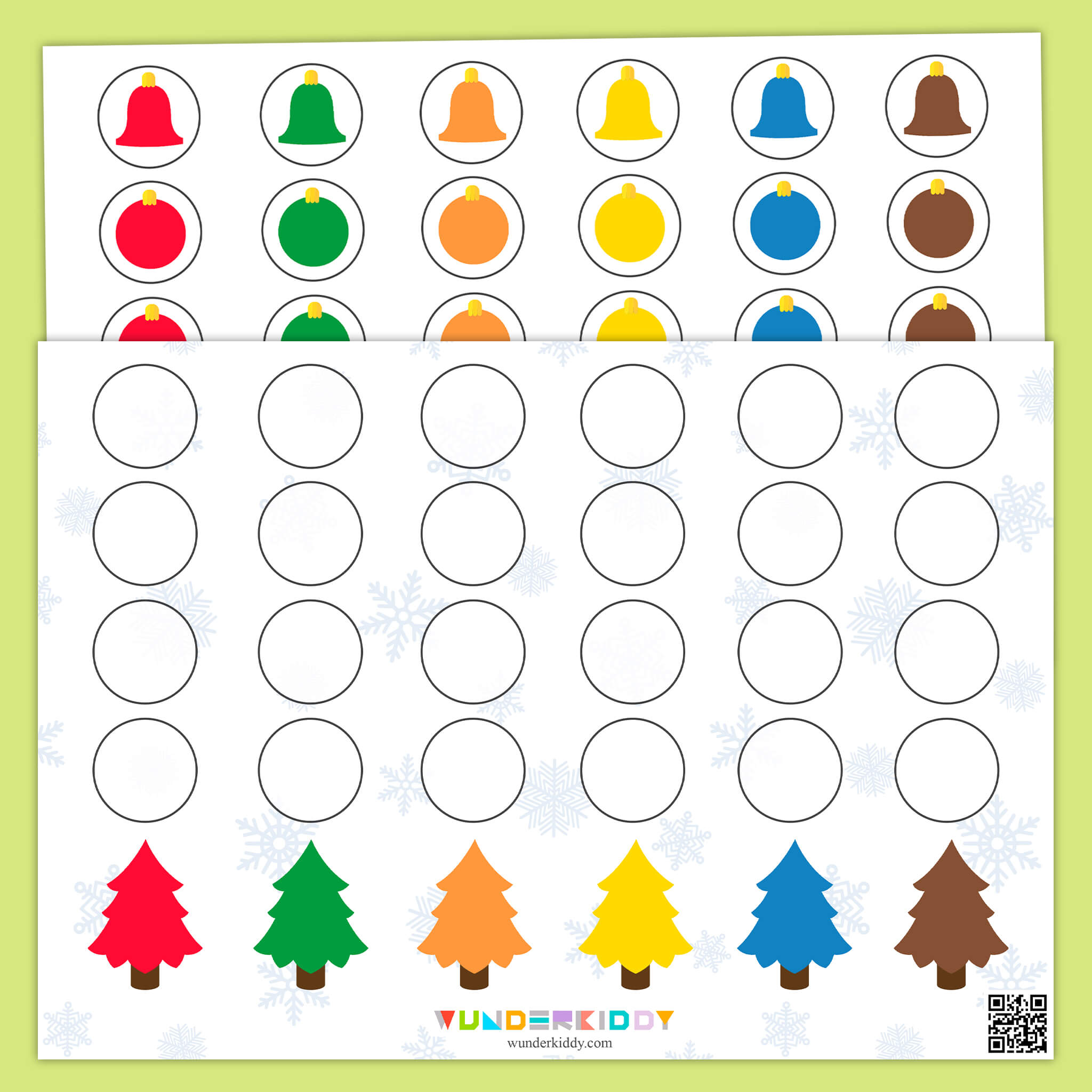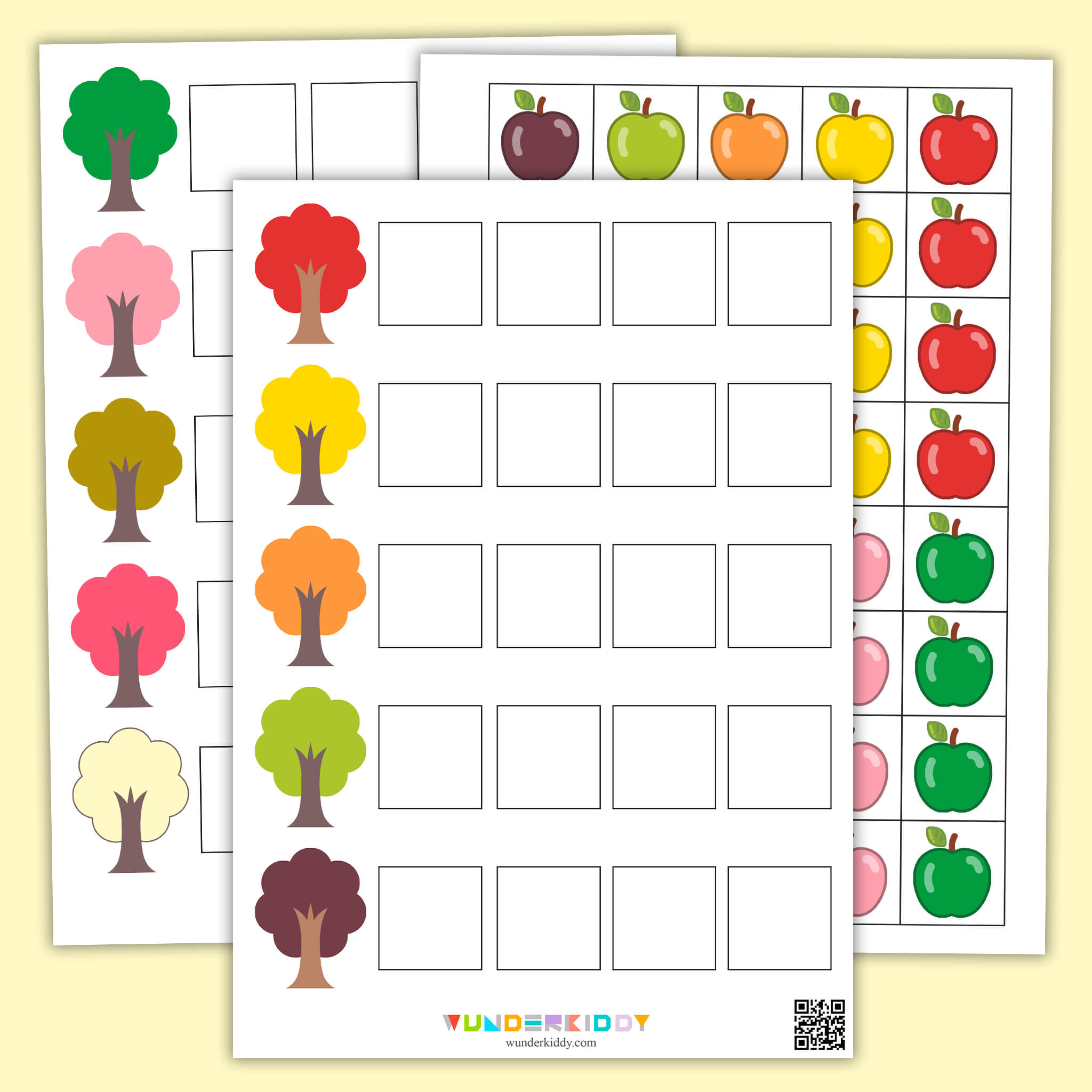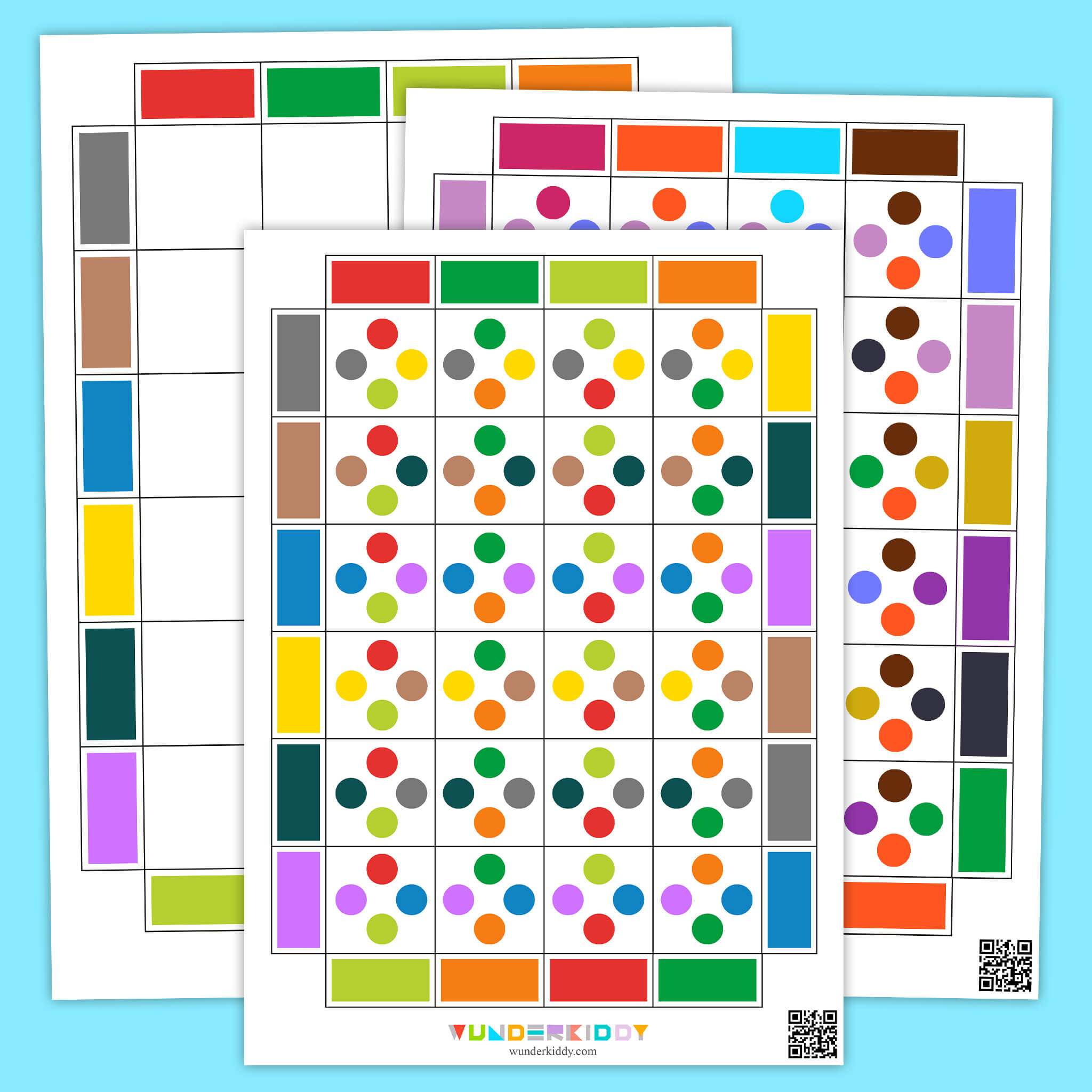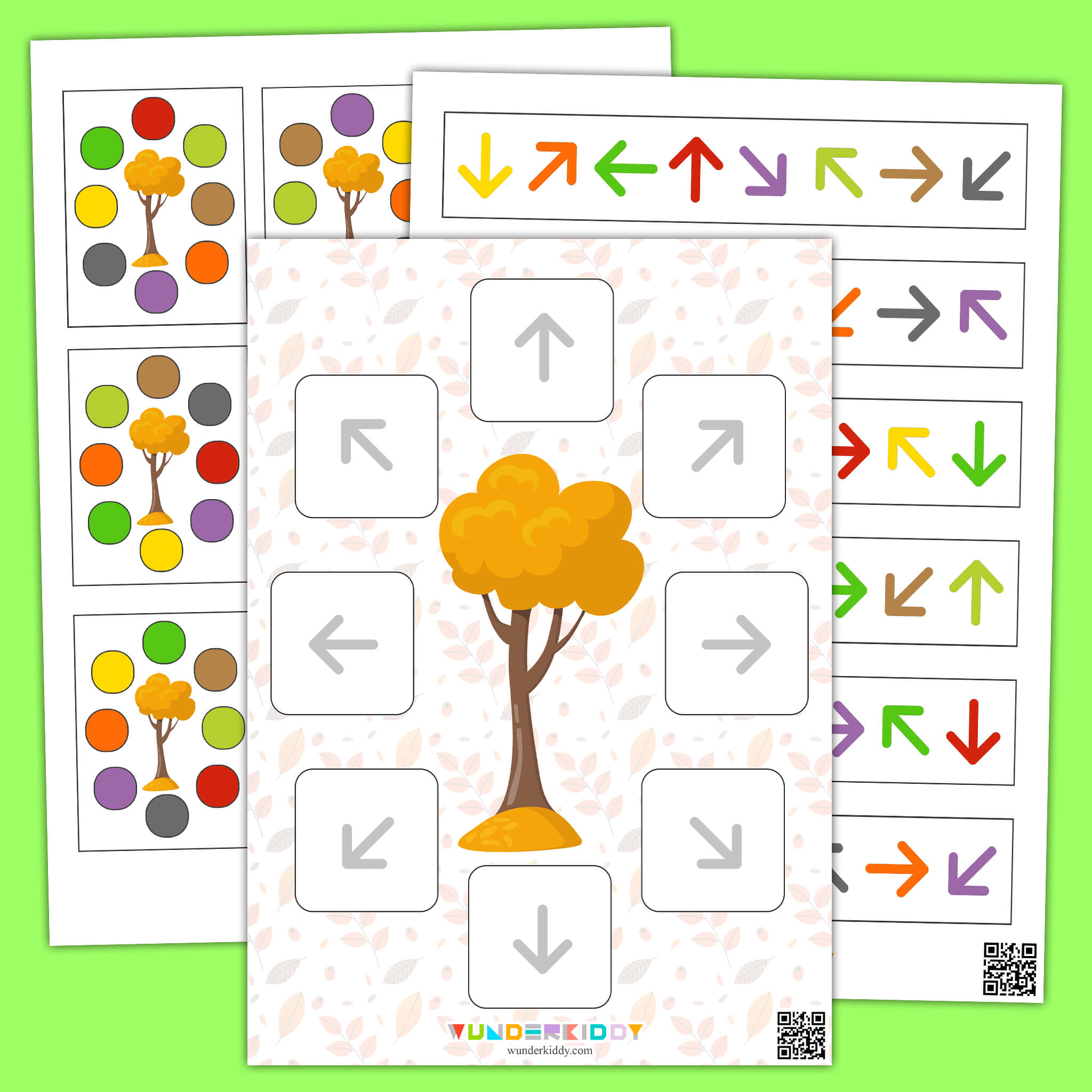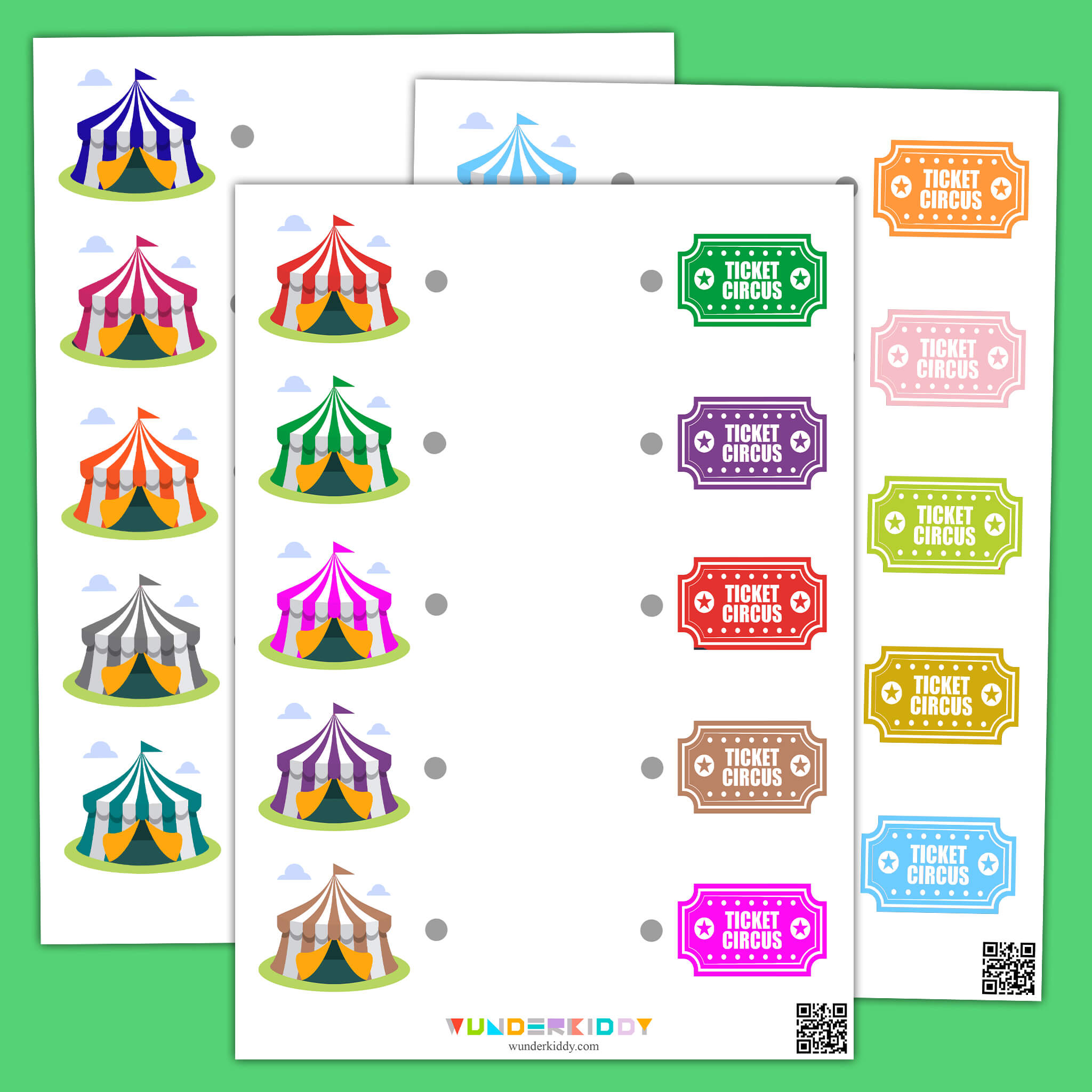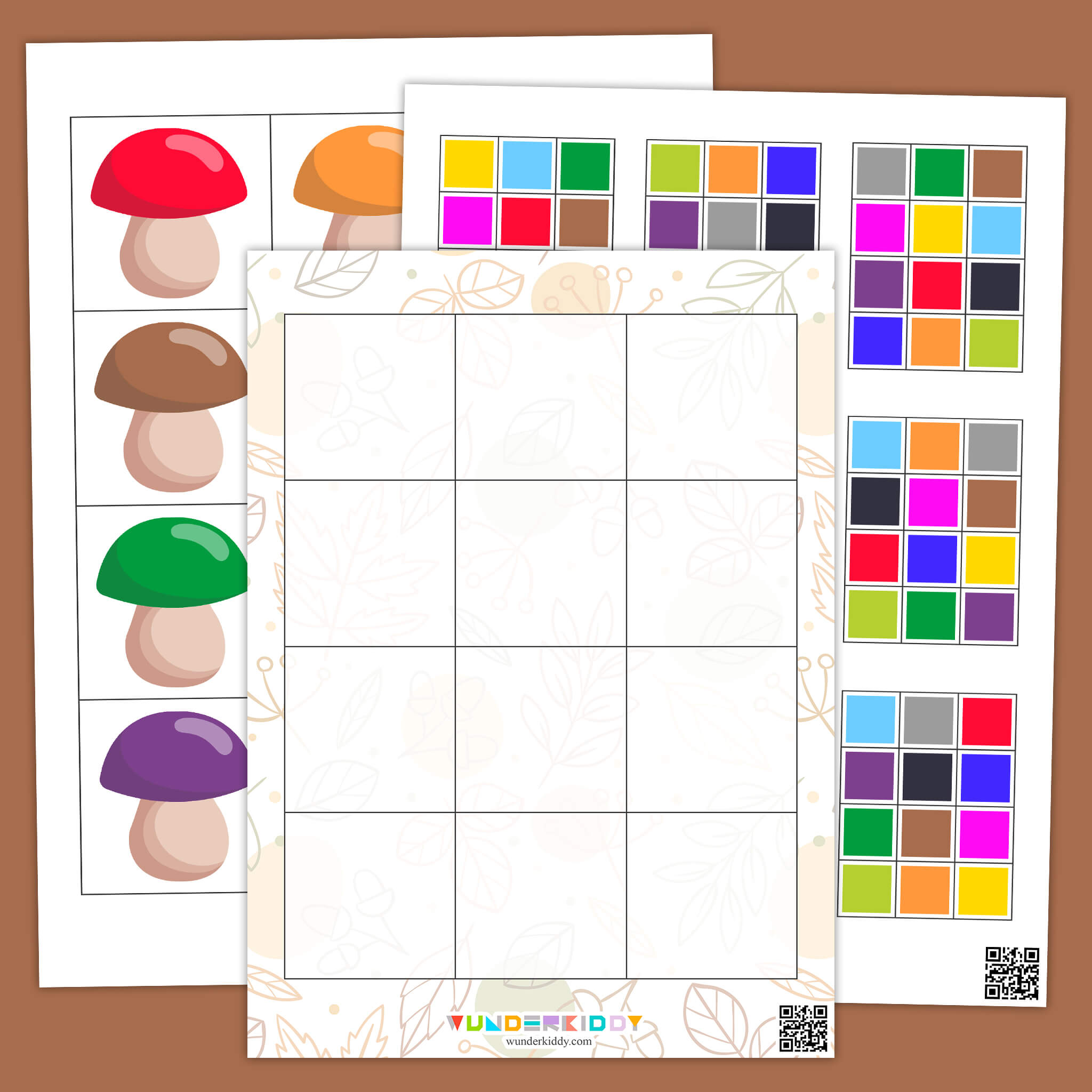Color Worksheets for Kindergarten
FilterEarly infant development helps to build basic skills that are essential for further learning. An important part of sensory development are activities about colors and shades. Already by 2–3 months, babies begin to perceive colors, but the ability to distinguish them appears a little later. The task of parents is to turn daily learning into a simple and understandable game for the child, in the process of which the baby will be able to show their talents and abilities. Activities to learn colors stimulate the interest of kids and promote quick memory of colors.
What age should you start learning colors and shades with your child?
Under the age of 1 year, the child sees the world in bright colors, but is not able to consciously find objects of a particular color. The ability to distinguish and remember colors appears by the age of 2–3 years. At this age, it is necessary to actively engage your toddler and teach colors using educational aids for children and printed materials.
Techniques for learning colors should be appropriate for the age of the child:
- Up to one year of age. Focus your baby's attention on colors by showing him or her different objects. Do not expect your child to learn the information right away.
- Up to 2 years of age. At this age, the child is able to distinguish and sort basic colors. Printouts for activities with children 2–3 years old will help your child to expand their knowledge.
- Ages 3 and up. Babies actively interact with the objects around them, so color activities for preschoolers should be more complex than the usual sorting. Activities about colors can be diversified by drawing, sculpting from plasticine or construction.
When we teach babies to distinguish colors, we expect instant results. Even with active lessons, a child of 3 years old may confuse colors or concentrate on only one of them. This is a temporary phenomenon, which will pass when the child's speech is fully formed.
Easy to learn and remember colors
To understand that the child distinguishes and is ready to learn the colors, take a colored cube and ask him or her to show the same one. If he or she is able to do the task, take a colored card and study the main colors of the flashcard, with the child linking an object or image to each card. This way the kid will be able to develop thinking and imaginative memory. Start learning the colors from the basic colors - blue, red, and yellow.
Teach your child in a fun and playful way, gradually making the tasks more difficult. After the child has learned new information, replace educational pictures for children with coloring pictures or mixing colors on paper. Use color worksheets PDF printable on our website. It is easy to choose from the catalog of educational games, print them on paper and give your child the opportunity to demonstrate their skills by performing a simple task appropriate for their age.
Doman flashcards – peculiarities of the method
There are different methods that help to unlock the potential of a baby almost from birth and direct their talents in the right direction. At the same time, there is no universal teaching formula that is suitable for all children without exception. Only parents can assess the child's potential, on the basis of which learning materials are selected. The Doman system is very popular, it states that the development of the child's skills begins from birth. Doman's color flashcards are used in the learning process and the child learns from the first months of life.
Learn colors with your baby with Doman flashcards correctly:
- Choose 4–5 flashcards with the primary colors from the set.
- Show the flashcards one by one and say their names clearly. Show them quickly, no more than a few seconds at a time.
- Demonstrate the colors to children at least 3 times a day, taking short breaks between each colors activity.
- The next day, add 2-3 more pictures of color for the children and show them in different order.
It takes about 30 demonstrations to memorize one flashcard, i.e., with daily training, the baby will memorize their names in 10 days. In addition to the Doman system, you can use Montessori color cards in training. Montessori's methodology is actively practiced in kindergartens. It is based on working with improvised materials - threads, cubes, plates, paints. If you notice that your child's interest in learning is falling, switch their attention to different fun activities for kindergartners.
Color matching activities for kids
Children gain most of their early knowledge from the world around them. They observe adults, get acquainted with new objects and learn to evaluate them. Printable velcro games for toddlers consist of simple exercises that will help them learn colors and relate them to specific things or phenomena.
Let's consider educational games for learning shades and colors:
- Sorting objects activity. You can use stickers, cubes, a construction set, pencils, or toys as teaching materials. Gradually complicate the tasks by adding new colors for preschoolers. To keep your child interested in learning, use their favorite toys in the tasks.
- Pair it up. The tasks from the series of find a pair to the subject help to memorize new material faster. A good assistant in learning colors are educational cards for children 3 years old, which can be printed for free.
- Color bingo. The game is designed for children of 4–5 years old. The task of the child is to collect together all the pictures of the same color. The tasks can be performed alone or in a group of 3–4 people.
- Colours flashcards. You can introduce children to new colors and their shades by showing them printed color cards. Print out the Doman cards to learn the colors. On one side of the card is a colored picture on a white background, and on the other side is a description of the color and a task for your child to do.
It is necessary to learn colors from early childhood, as this skill is important for full development and perception of the world around us. There is no need to rush and overload the child with new information. Learn the basic colors and then move on to the next sets. The most comfortable mode of learning for a preschooler are developmental activities for kids with the use of printed materials. Printable color worksheets familiarize children with such concepts as color and shape of an object, teach them independence and help develop creative abilities.
